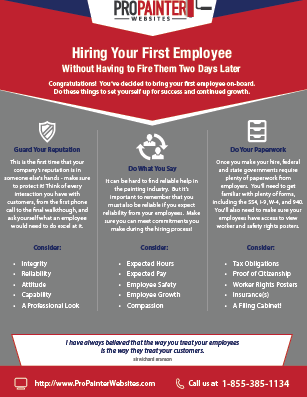The Influence Of Climate Condition On Industrial Exterior Painting: Key Considerations
The Influence Of Climate Condition On Industrial Exterior Painting: Key Considerations
Blog Article
Created By-Cash Duckworth
When you're intending a business exterior painting task, don't underestimate the influence of climate on your outcomes. You require to think about factors like temperature, humidity, and rainfall, as they can make or damage your paint task. For instance, did you understand that ideal problems ask for particular temperature level ranges and moisture degrees? Stopping working to check these aspects can lead to irregular surfaces or even damages to fresh paint. Understanding these elements is essential to accomplishing a lasting, specialist outcome. So, what particular weather should you be wary of?
Temperature level Considerations
When it concerns industrial outside paint, temperature level plays a crucial function in the result of your task. If you're painting in severe warm, the paint can dry as well rapidly, bring about problems like poor adhesion and irregular surfaces. You want to go for temperatures in between 50 ° F and 85 ° F for the very best results. Listed below 50 ° F, paint may not treat effectively, while above 85 ° F, you take the chance of blistering and splitting.
Timing your job with the appropriate temperature levels is important. Start your job early in the early morning or later in the mid-day when it's cooler, especially throughout hot months.
Likewise, take into consideration the surface temperature level; it can be significantly greater than the air temperature, particularly on sunny days. Utilize a surface area thermostat to inspect this before you begin.
If temperatures are unpredictable, watch on the weather report. Unexpected temperature level drops or warm front can thwart your strategies. You do not intend to start painting just to have the problems change mid-project.
Moisture Degrees
Humidity levels significantly impact the success of your commercial outside painting project. When the moisture is expensive, it can prevent paint drying and healing, causing a series of concerns like bad adhesion and finish quality.
If you're planning a work during moist problems, you may locate that the paint takes longer to completely dry, which can expand your task timeline and increase costs.
Alternatively, reduced https://www.bhg.com/home-improvement/moving/better-homes-and-gardens-real-estate/painted-brick-home-exterior-sellability/ can also posture challenges. Paint may dry also promptly, stopping correct application and leading to an unequal finish.
You'll want to monitor the moisture degrees carefully to guarantee you're functioning within the perfect range, normally in between 40% and 70%.
To get the most effective outcomes, think about using a hygrometer to measure humidity prior to starting your project.
If you discover the degrees are outside the ideal range, you may require to readjust your timetable or choose paints created for variable conditions.
Always speak with the maker's guidelines for certain recommendations on moisture resistance.
Precipitation Influence
Rainfall or snow can dramatically disrupt your industrial external painting plans. When rainfall occurs, it can get rid of freshly applied paint or create an unequal finish. Ideally, you wish to choose days with completely dry weather to ensure the paint sticks correctly and cures successfully. If you're caught in a rain shower, it's best to stop the job and wait for conditions to boost.
Additionally, snow can be even more harmful. Not just does it develop a wet surface area, yet it can also decrease temperatures, making it tough for paint to completely dry. This can result in problems like peeling off or blistering down the line.
It's vital to check the weather report prior to starting your project. If https://small-job-painters-near-m09764.shoutmyblog.com/32440277/discovering-to-spending-plan-effectively-for-a-business-external-painting-job-is-essential-yet-are-you-prepared-to-explore-the-keys-that-ensure-high-quality-results or snow is forecasted, take into consideration rescheduling.
Constantly keep in mind to allow ample drying out time in between coats, particularly if the climate continues to be uncertain.
Final thought
To conclude, keeping an eye on the climate is vital for an effective industrial external paint job. By checking temperature level, moisture, and rainfall, you can make certain the best problems for application and healing. Remember to intend your work around desirable weather condition and constantly comply with supplier standards. With the right strategy, you'll attain a durable, beautiful surface that can withstand the components. Don't allow the climate catch you off-guard-- stay educated and paint wise!
